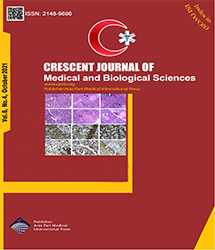| Original Article | |
| The Effects of Dynamic Spatial Hearing Rehabilitation Combined With Transcranial Electrical Stimulation on Speech Perception in Noise in Elderly Men: A Randomized Clinical Trial | |
| Majid Ashrafi1,2, Mansoureh Adel Ghahraman2, Ghassem Mohammadkhani2, Shohreh Jalaie3, Hamed Sadjedi4 | |
| 1Department of Audiology, School of Rehabilitation, Shahid Beheshti University of Medical Sciences,Tehran, Iran 2Department of Audiology, School of Rehabilitation, Tehran University of Medical Sciences, Tehran, Iran 3Biostatistics, School of Rehabilitation, Tehran University of Medical Sciences, Tehran, Iran 4Department of Electrical Engineering, Shahed University, Tehran, Iran |
|
|
CJMB 2021; 8: 283-295 Viewed : 4616 times Downloaded : 2882 times. Keywords : Elderly, Spatial hearing, Auditory rehabilitation, Transcranial electrical stimulation, Speech perception |
|
| Full Text(PDF) | Related Articles | |
| Abstract | |
Objectives: Speech perception problem in noise is the most common complaint among elderly people. Based on previous evidence, auditory training improves central auditory system plasticity in the elderly. The aim of the present study was to evaluate the effectiveness of the designed hearing rehabilitation program in overcoming this problem. Materials and Methods: This randomized, controlled clinical trial was performed on 80 elderly people aged 60-75 years old who were randomly assigned to four equal groups. One group received only dynamic spatial hearing rehabilitation (DSHR) while the other group received the DSHR combined with transcranial direct current stimulation (DSHRWTDCS). Groups 3 and 4 were the control and sham groups, respectively. All participants were evaluated by behavioral and electrophysiological tests and a questionnaire was administered before, after, and one month after the end of the intervention. Results: Based on the results of behavioral, electrophysiological tests and the intended questionnaire, there was a significant difference between the means of the second and third stages with the first stage in ODSHR and DSHRWTDCS groups. Further, there was a significant difference between the means of the second and third stages in both ODSHR and DSHRWTDCS groups and those of the other two groups. Conclusions: The positive effects of the spatial hearing rehabilitation program with tDCS are confirmed by various aspects of self-assessment, electrophysiological and behavioral tests, and thus can be the basis for developing comprehensive rehabilitation programs. |
Cite By, Google Scholar
Google Scholar
PubMed
Online Submission System
 CJMB ENDNOTE ® Style
CJMB ENDNOTE ® Style
 Tutorials
Tutorials
 Publication Charge
Medical and Biological Research Center
About Journal
Publication Charge
Medical and Biological Research Center
About Journal
Aras Part Medical International Press Editor-in-Chief
Arash Khaki
Deputy Editor
Zafer Akan


















